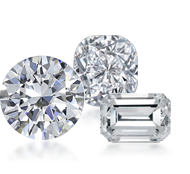Risk Free Shopping with The Mark Broumand Advantage
Free Shipping and Returns. Secure Shopping. Satisfaction Guarantee.
Enjoy free expedited shipping and returns with every order. All shipments are fully insured and shipped via FedEx Two-Day. International orders are shipped FedEx International Priority.
Markbroumand.com uses the most current encryption technology to provide you with the safest, most secure shopping experience possible. This technology enables encryption of sensitive information, including passwords and credit card numbers, during your online transactions. All of the forms on our site are secured so your personal information stays safe and out of malicious hands.
We are here to make sure you are 110% satisfied with your purchase. We pride ourselves in delivering exactly what we advertise and promise. You are more than welcome to return any item within seven days of receiving it if you are not fully satisfied for any reason. International clients will have an extension on the return period. Special orders or items that have been customized or re-sized are eligible for 100% credit towards another Mark Broumand piece.
Lifetime Warranty
All Mark Broumand pieces are created to the highest of standards and are consistently checked for impeccable quality. We are pleased to offer a three-month warranty against any manufacturing defects and a lifetime warranty on the precious metal.














